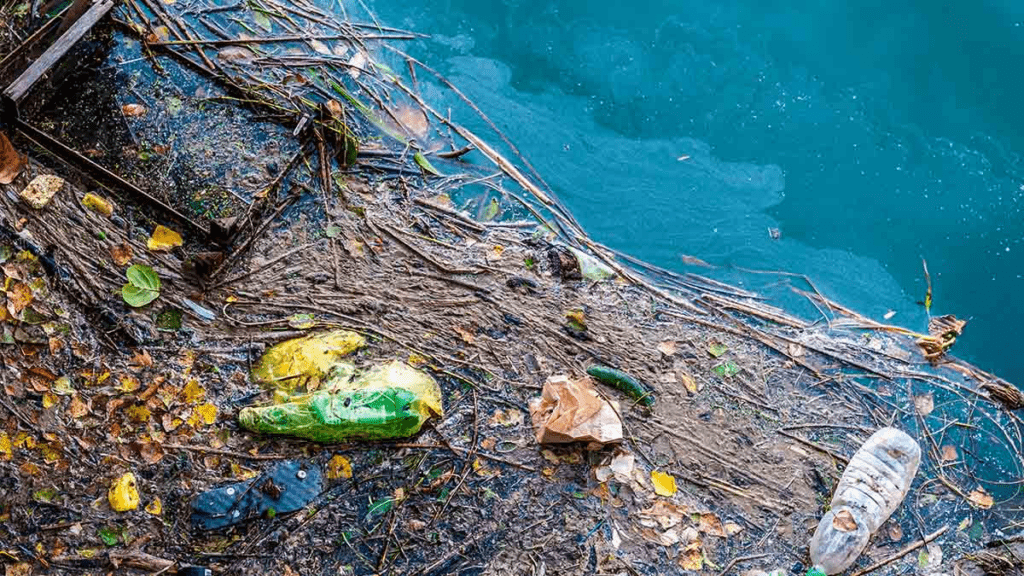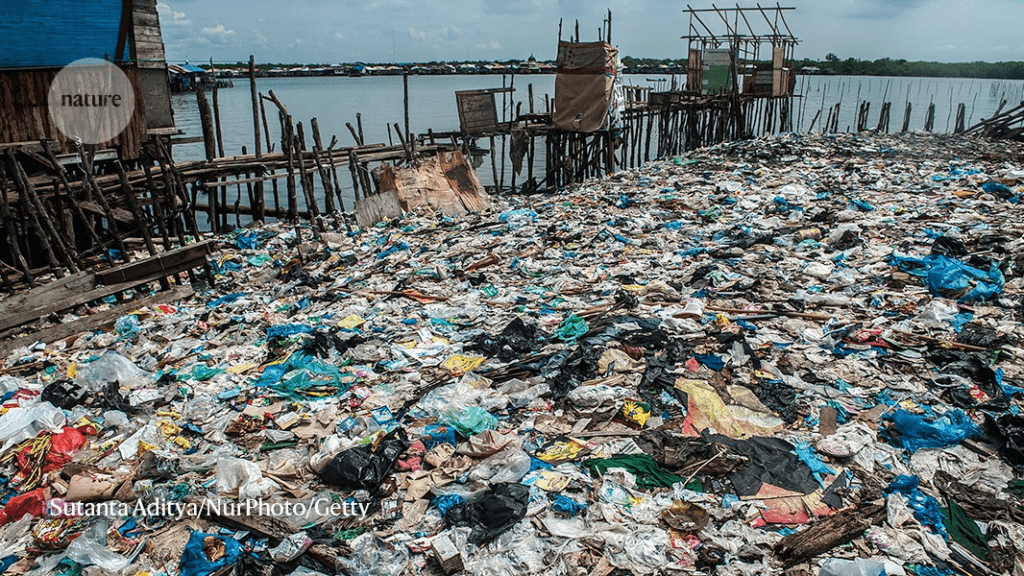Plastic pollution has become a global crisis, threatening marine ecosystems, wildlife, and human health. While cleanup technologies like The Ocean Cleanup’s Interceptor 006 are revolutionizing waste management in waterways, the battle against plastic pollution requires a multifaceted approach that includes addressing the root causes of the problem.
In this article, we explore The Ocean Cleanup’s innovative solution, its achievements, limitations, and alternative methods to combat the plastic tsunami.
The Interceptor 006: A Technological Marvel
The Ocean Cleanup, a renowned nonprofit organization, has set an ambitious goal of removing 90% of floating plastics from the oceans by 2040. A cornerstone of their strategy is the Interceptor 006, a device specifically designed to tackle riverine plastic pollution before it reaches the ocean.
How Does the Interceptor 006 Work?
- Interception at Source: It collects plastic directly from rivers, the primary conduits of oceanic pollution.
- Two-Arm System: Its robust design withstands extreme flooding and gathers vast amounts of waste efficiently.
- Scalability: It can be deployed in various high-pollution rivers worldwide, amplifying its impact.
Case Study: Las Vacas River, Guatemala
In heavily polluted rivers like the Las Vacas River, the Interceptor 006 has proven its capability by intercepting tons of plastic within hours, preventing further harm to marine biodiversity.
Challenges of Technological Solutions
The Interceptor 006 is undoubtedly a testament to technological innovation in tackling marine plastic pollution, but it cannot solve the problem on its own. One of the most pressing challenges it faces is the relentless flow of plastic waste into waterways. Despite cleanup efforts, plastic continues to be produced and discarded at an alarming pace, making it difficult to keep up with the sheer volume of waste entering our ecosystems. Compounding this issue is the global disparity in waste management infrastructure. Many regions, particularly in developing countries, lack the necessary systems for proper waste segregation, recycling, and disposal, allowing significant amounts of plastic to end up in rivers and oceans.
Another critical challenge lies in addressing behavioral and policy barriers. The world’s heavy reliance on plastics, coupled with insufficient regulations to curb their production and use, exacerbates the crisis. Without stronger policies to limit plastic consumption and promote alternatives, along with shifts in individual and corporate behavior, the efforts of technologies like the Interceptor 006 will remain insufficient. To make a meaningful impact, a more holistic approach is needed, combining technological advancements with systemic changes in waste management, policy enforcement, and public attitudes toward plastic use.
Addressing the Root Causes of Plastic Pollution
To create a sustainable impact, technological innovations must be paired with systemic changes that address the root causes of environmental degradation. One crucial solution is to reduce plastic production by shifting the focus from single-use plastics to sustainable materials. Industries should be encouraged to adopt biodegradable and reusable alternatives, helping to curb the overwhelming dependence on disposable plastics. This transition not only mitigates environmental harm but also fosters a market for eco-friendly innovations.
Improving waste management systems is another critical step. Investments in infrastructure for waste collection, segregation, and recycling are essential for handling the growing volume of waste effectively. Additionally, adopting extended producer responsibility (EPR) models can make companies accountable for the entire lifecycle of their products, ensuring that waste management is prioritized at every stage of production and consumption.
Promoting circular economy policies further strengthens these efforts. By introducing regulations that limit unnecessary plastic packaging and supporting initiatives that encourage reuse, repair, and recycling, society can transition from a linear disposal model to one that maximizes resource efficiency. Such policies not only reduce waste but also create opportunities for sustainable business practices.
Finally, educating and empowering individuals plays a fundamental role in driving change. Raising awareness about the harmful effects of plastic pollution on ecosystems can inspire behavioral shifts, such as carrying reusable bags, bottles, and avoiding single-use items. When individuals are equipped with knowledge and practical alternatives, they become active participants in the journey toward sustainability, amplifying the impact of systemic reforms and technological advancements.
Alternative Innovative Solutions
In addition to The Ocean Cleanup’s initiatives, numerous organizations and technologies are making significant progress in combating plastic pollution. One notable effort is the SeaBin Project, which utilizes floating devices to collect debris and microplastics from marinas and harbors. These innovative devices provide an effective solution for cleaning localized water bodies, helping to reduce the accumulation of plastic waste in marine ecosystems.
Another groundbreaking development involves plastic-eating enzymes. Scientists are engineering enzymes like PETase, which can efficiently break down plastic materials. This technology holds promise for addressing the challenges of plastic waste at a molecular level, offering a sustainable method for recycling plastics that are otherwise difficult to manage.
River booms and barriers also play a critical role in waste management. These cost-effective structures are designed to guide floating plastic waste toward designated collection points in rivers, preventing it from reaching the ocean. Their simplicity and scalability make them a practical solution for countries with limited resources for large-scale waste management systems.
Waste-to-energy initiatives further contribute to reducing the environmental impact of non-recyclable plastics. By transforming these plastics into energy, these programs not only minimize landfill waste but also provide an alternative energy source, demonstrating the potential of innovative technologies to address multiple challenges simultaneously. Together, these efforts complement larger cleanup projects and pave the way for a more sustainable future.

What Can You Do?
Tackling plastic pollution is a shared responsibility that calls for collective action across all levels of society. One way to contribute is by supporting innovative projects that combat this global challenge. Initiatives like The Ocean Cleanup rely on public backing to develop and scale technologies designed to remove plastic waste from rivers and oceans. By donating to or advocating for such efforts, individuals can play an active role in promoting solutions that directly address plastic pollution.
Another powerful step is adopting sustainable habits in daily life. Simple changes, such as reducing the use of single-use plastics, choosing reusable alternatives, and recycling responsibly, can have a meaningful impact when practiced consistently. These small but significant actions reduce waste generation at the source and help to foster a culture of environmental responsibility.
Advocating for policy change is also essential to addressing the systemic roots of plastic pollution. Stricter regulations on plastic production, better waste management practices, and the promotion of sustainable materials are necessary to create lasting change. By raising awareness and demanding stronger policies from governments and industries, individuals can help drive the transition to a more sustainable and plastic-free future. Together, these efforts contribute to a comprehensive approach to tackling one of the planet’s most pressing environmental issues.

Conclusion
The fight against plastic pollution is a race against time. Technologies like the Interceptor 006 offer hope by addressing the problem at its source. However, the larger battle lies in changing human behavior, reforming policies, and building systems that prioritize sustainability.
By supporting innovative solutions and adopting mindful practices, we can collectively stem the tide of the plastic tsunami and protect our oceans for generations to come.
What are your thoughts on these solutions? Share your ideas and help inspire more action!
Related Content
- No more blame game: let’s stop the plastic tsunami together
- To Solve the Plastic Crisis, We Must Phase out Production
- We have the solutions to help end plastic pollution – WWF Australia
- 5 innovative ways we are tackling plastic waste

